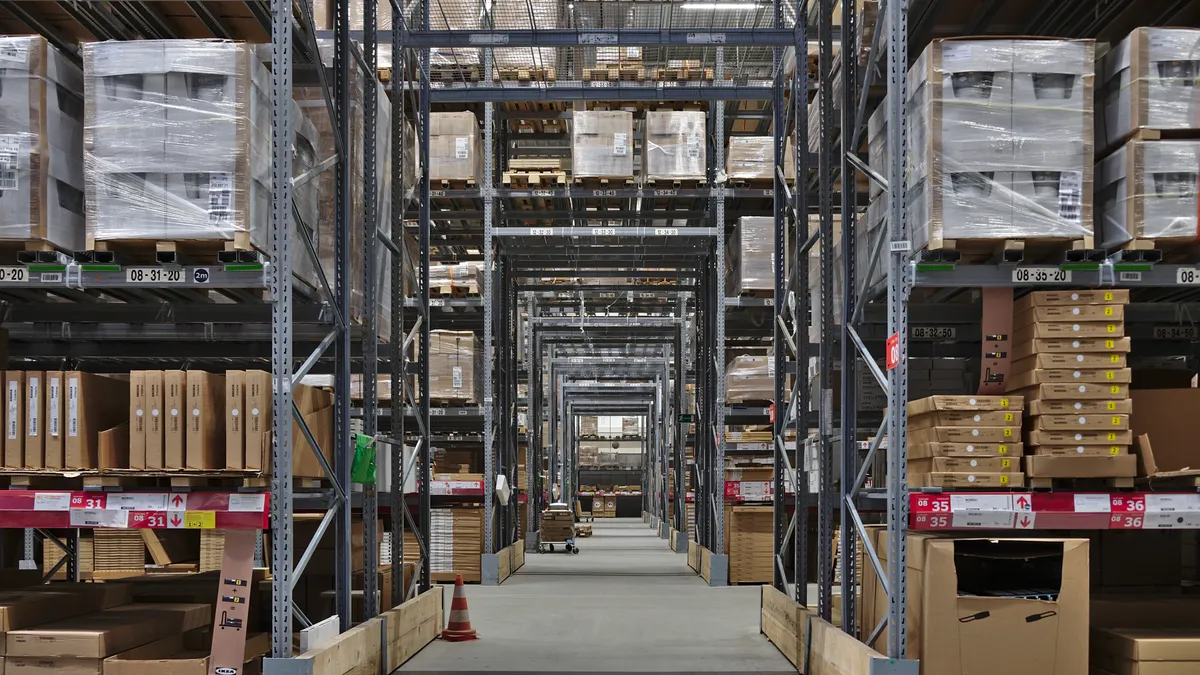Dive Brief:
- Warehouse hiring hit another highpoint in December, with employment in the sector up nearly 9% YoY to reach more than 1.29 million workers, according to preliminary figures from the Bureau of Labor Statistics.
- These workers were also working longer hours in the run-up to peak season. Average hours worked reached nearly 43 hours per week for nonsupervisory employees in November, according to the BLS.
- The Producer Price Index for the warehousing and storage sector reached its highest point in a decade, after tumbling in the early days of the pandemic, signaling added warehousing costs are being passed along to customers.
Dive Insight:
In the run up to peak season, multiple logistics companies announced plans to bring on thousands — or tens of thousands — of additional employees to help handle the additional volume flowing through their network.
The latest figures from the BLS highlight just how much networks added to their labor capacity, while underscoring the continued importance of labor in an increasingly automated industry.
But as the demand for labor increased, a raging pandemic didn't make it easy to keep workforces at the needed levels. A recent survey by Resilience360 found that 40% of supply chain professionals expect labor unavailablity to be a concern for the next three to six months.
Labor issues have been especially prevalent at ports and in manufacturing, which can't rely on bringing in workers from industries experiencing high unemployment such as the restaurant or hotel industries. Preliminary figures from BLS show that manufacturing still has not reached its pre-pandemic level of employment, with employee levels down more than 4% YoY.
The strong upward trajectory in warehousing and storage employment suggests that the industry has been fairly successful in adding to its workforce as it experienced capacity needs. Still, warehouse operators have noted the environment is not easy to operate in.
"Labor continues to be the number one, number two and number three problem," Prologis CEO Hamid Moghadam said last week. "I thought it would have moderated given the downturn and the unemployment rate."
One factor complicating employment is the turnover rate in the warehouse industry, which can be very high, Moghadam said.
"People move for relatively small changes in compensation and environment," he said. "And customers are paying more attention to environment and all those amenities that can really be more attractive to labor in addition to paying more."
The Logistics' Managers Index showed warehouse capacity contracting for the fifth-consecutive month in its January report. The LMI report noted that traditional wisdom would suggest more warehouse capacity would open up after the holidays, but the network was much tighter in 2020 than the preceding year.
Multiple industries including healthcare, food and beverage, and home improvement, are fueling demand, according to Prologis executives.
"This is likely due to the shift in consumer behavior as a result of the pandemic, in addition to the bet that many e-commerce retailers are making with respect to future growth," according to the LMI report.
This story was first published in our weekly newsletter, Supply Chain Dive: Operations. Sign up here.















